The barbershop and beauty salon are important community touch points for health, wellness, and social connection in so many peoples’ lives. In my book, HealthConsuming: From Health Consumer to Health Citizen, I feature the black barbershop to introduce a chapter on “The New Retail Health.”
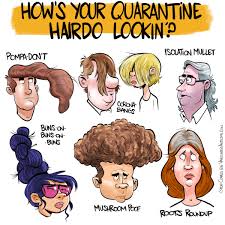 In the COVID-19 pandemic, how we’re dealing with hair is a metaphor for personal control, for political statements, for mental health, and for overall well-being. Check out Geoff Coates’ (known as Sadochicken, from Vancouver) take on “how quarantine hairdos are lookin’,” here.
In the COVID-19 pandemic, how we’re dealing with hair is a metaphor for personal control, for political statements, for mental health, and for overall well-being. Check out Geoff Coates’ (known as Sadochicken, from Vancouver) take on “how quarantine hairdos are lookin’,” here.
Can you see yourself? I can (it’s the “Corona Bangs” style for me, in quarantine mode).
Isolation is changing how you look, The Atlantic reported,
I’m pretty sure that today, more people are asking themselves, “when can I get back to my salon stylist or barber?” than, “when can I return to my primary care doctor or cardiologist?”
“First went the hand sanitizer, disinfectants and toilet paper. Now hair clippers and hair dye are flying off shelves,” CNN reported from an interview with Walmart CEO, Doug McMillon, titled, “We’re in the hair color phase of panic buying,” dated 22 April 2020.
Consider this: “The salon business isn’t built to withstand a pandemic. Weeks of social distancing have been devastating for an industry of professionals who make a living by touching people,” Cheryl Wishhover wrote in Allure magazine. Our visits to brick-and-mortar shops that manage our hair, whether we are female or male, older or younger, across socio-economic strata, are multi-layered experiences that touch us physically, socially, and emotionally. Millions of people have been missing these visits as we watch our colored roots grow out, our bangs hang into our eyes, our braids needing to be re-braided. We miss the folks we regularly visit to catch up on Hollywood gossip or local politics, on family goings-on and neighborhood up-dates.
As Wishhover observed in the Allure story, “No matter the circumstances, the DIY experience can never re-create the connection and community that exist in local salons. Salons are often communities for their patrons, and hairstylists and manicurists are confidantes. Many people have a fierce loyalty to their stylists, staying with them for years or even decades.”
![]() Furthermore, “In the Black community, salons for us aren’t just places to go and get your hair done. They’re really sanctuaries,” Brianna Arps, a marketing professional, explained to Wishhover.
Furthermore, “In the Black community, salons for us aren’t just places to go and get your hair done. They’re really sanctuaries,” Brianna Arps, a marketing professional, explained to Wishhover.
In the coronavirus quarantine era, millions of Americans have been staying home to flatten the curve, and it’s been working from the evidence-based, public health standpoint. But this first-wave impact of the pandemic and #StayHome mandates have exacted a price on financial and mental health. In the latest Kaiser Family Foundation Poll for May 2020 released this week, four in ten U.S. adults said that worry and stress from COVID-19 have had a negative impact on their mental health.
Women, and people in urban and suburban areas, were more likely to tell Kaiser Family Foundation say that the coronavirus has had a negative impact on their mental health by a factor of 46% of women versus 33% of men.
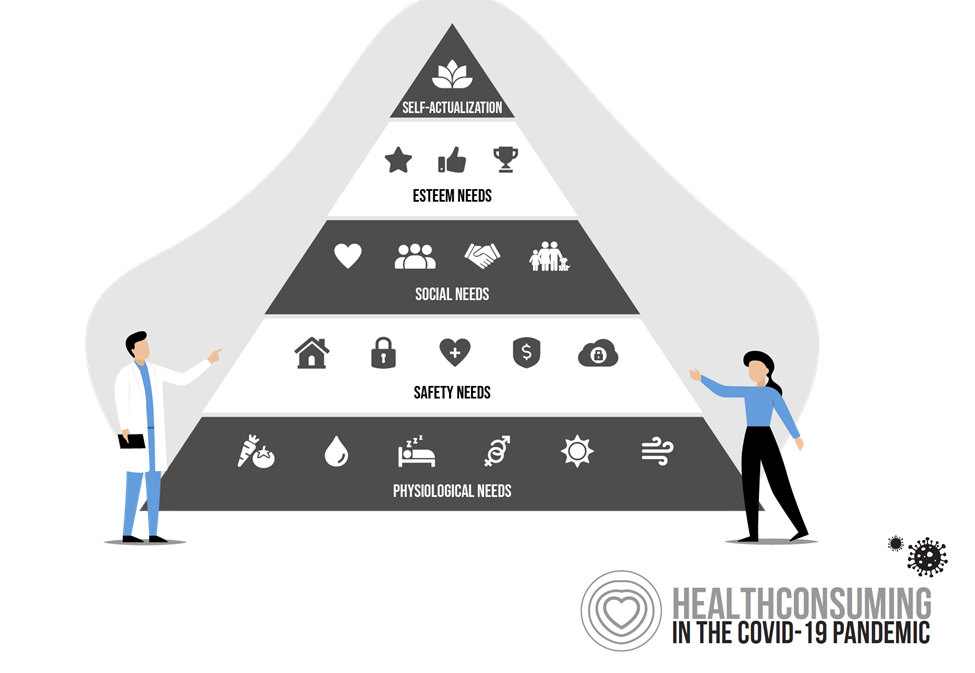
We humans naturally try to cope, reaching beyond our basic physiological needs on the Maslow Hierarchy to the north stars of self-esteem and -actualization.
Enter the brand Dove, which launched an ad on DIY hair in the midst of the pandemic. The campaign used the hashtag, #MyHairMyWay, this link going to the Ogilvy work on the project.
The ad reflects some of the COVID-19 hair trends emerging in our quarantine life styles, like colored hair (here, purple), cutting “quarantine bangs” (my own hack, getting semi-skilled by viewing several YouTube videos and using a professional scissors purchased on Amazon in my first week of #StayingHome), dealing with texture challenges, and growing out color-treated hair to natural gray.
The Dove brand has been working on re-defining our concepts of “beauty” overall, quite mindfully bringing inclusion into focus. This, itself, is affirming and supportive of well-being.
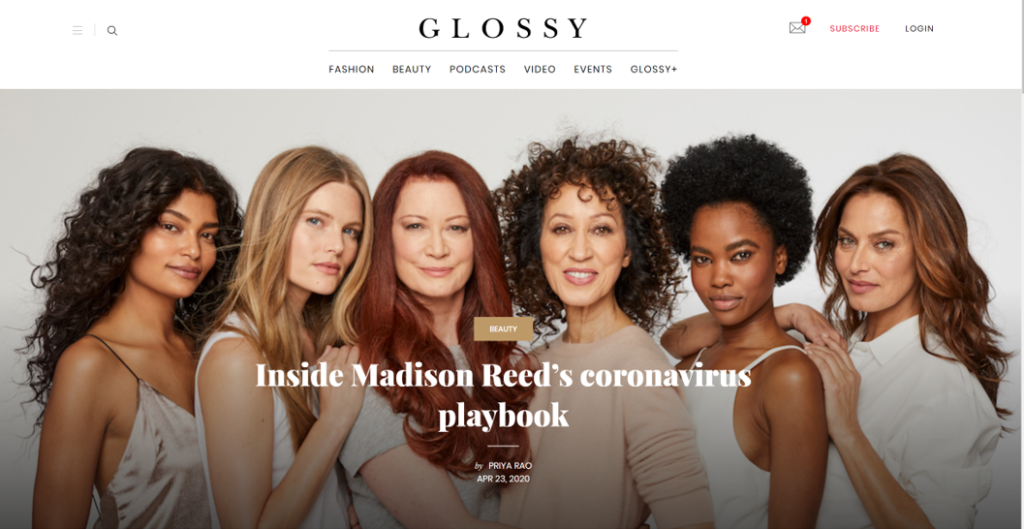 As experienced in the Great Recession starting in late 2008, consumers took on more do-it-yourself (DIY) tasks in terms of more cooking at home, more home care DIY projects, and more self-care. In the coronavirus-self-care moment, DIY hair color has been a winning category in fast-moving-consumer-goods (FMCG) at retail.
As experienced in the Great Recession starting in late 2008, consumers took on more do-it-yourself (DIY) tasks in terms of more cooking at home, more home care DIY projects, and more self-care. In the coronavirus-self-care moment, DIY hair color has been a winning category in fast-moving-consumer-goods (FMCG) at retail.
The direct-to-consumer hair color company Madison Reed is having a major growth spurt: the company’s CEO Amy Errett discussed her “coronavirus playbook” on Glossy, noting that since mid-March 2020, sales at Madison Reed grew by a factor of 10 times. In April, the company launched a Facebook Live series, “Colorist on Call,” to teach people how to dye hair at home. “I never want to put salons out of business,” Errett told Glossy, “but I think there will be more dualists, or people that go to a salon and then [dye their hair] themselves in between.” Like consumers’ fast-adoption of telehealth in the #StayHome pandemic, the behavior change of DIY hair color at home may persist long after the initial acute phase of the COVID-19 pandemic.
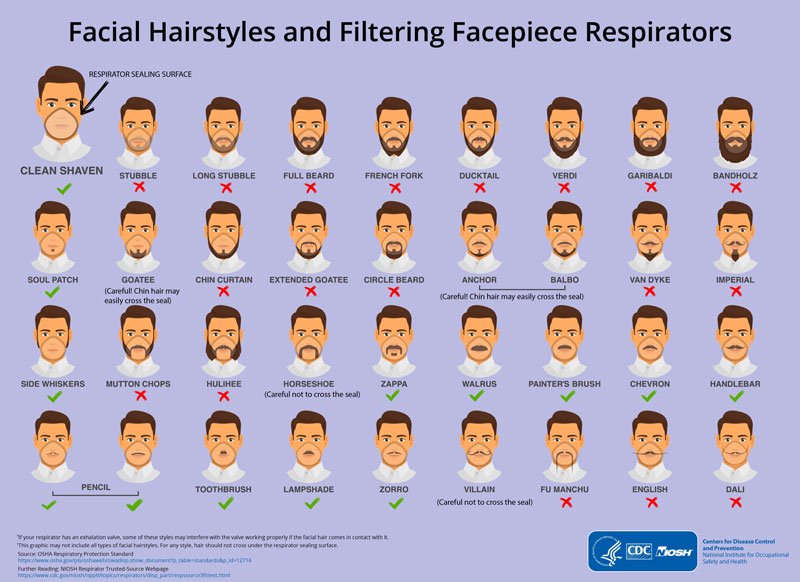 And let’s not leave other hair out of the discussion: let’s talk about facial hair.
And let’s not leave other hair out of the discussion: let’s talk about facial hair.
The Centers for Disease Control wondered, “To Beard or Not to Beard? That is the Question” in a CDC blog in 2017, well before the coronavirus raised its crowns in 2019.
This graphic was developed to guide people who wear respirators to work as a health education effort for November 2017’s No-Shave November and Movember. These public health campaigns were conceived to promote literacy about cancer, and to raise funds for awareness, education, and research.
It turns out that a beard can get in the way of a facepiece doing its optimal job to protect the worker.
Health Populi’s Hot Points: Consumers, feeling financial strapped in the pandemic, have adjusted spending across three key dimensions: first, in overall less spending; second, in the categories to which people are allocating scarcer dollars; and third, based on repurposing homes for work, education, health and self-care.
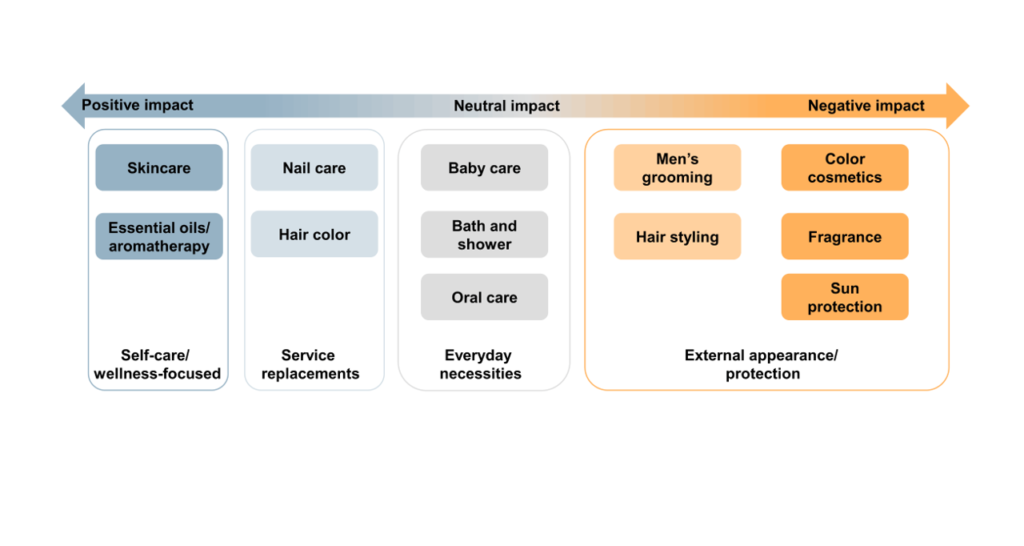 The last chart illustrates consumer personal care and beauty spending categories across a continuum of impact, from positive to negative, as of April 2020, via L.E.K.’s analysis of how consumers “found beauty in the time of pandemic.”
The last chart illustrates consumer personal care and beauty spending categories across a continuum of impact, from positive to negative, as of April 2020, via L.E.K.’s analysis of how consumers “found beauty in the time of pandemic.”
Note that self-care/wellness-focused products for skincare and essential oils/aromatherapy experienced the greatest positive impacts, followed by hair care and hair color — service replacements.
Self-care is self-service for wellness, and skin and hair are benefiting from consumers’ paying greater attention to them in the COVID-19 era.
This reflects a larger trend for self-care at home — as more people realize the empowerment and self-actualizing mental benefits of learning and doing more for ourselves. Armed with solid, evidence-based information for self-care, a consumer can bolster their home as a health hub. Both consumer and healthcare brands and providers can benefit from this trend — which had momentum pre-coronavirus. Consumers as health consumers are growing muscles for consuming and making medical care, wellness and now self-service for personal care at home.
An even larger trend over this is sustainability, the import of which the pandemic is also revealing. Watch for organizations, from banks to consumer goods and the hospitality industry, to embed sustainable approaches into post-pandemic strategies. That’s to meet both consumers’ and the macro-environment’s continued shift in this direction.


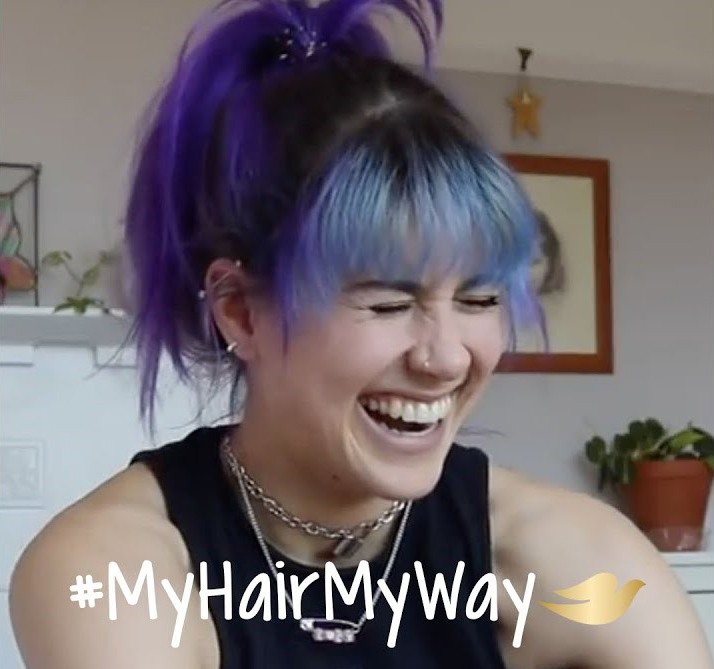


 Thank you FeedSpot for
Thank you FeedSpot for